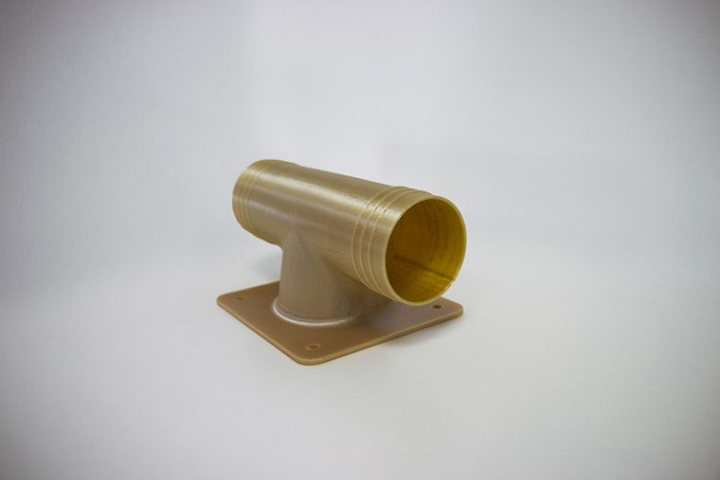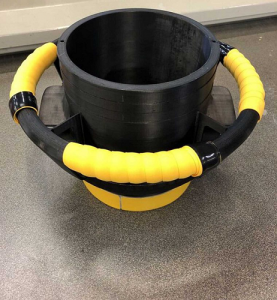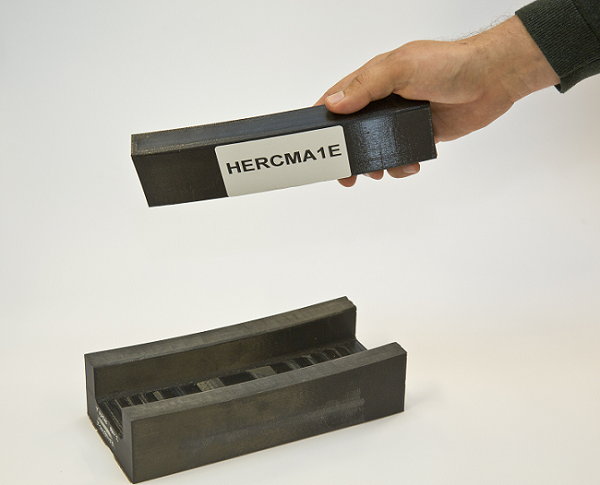 The Marshall Aerospace and Defence Group (ADG), part of Marshall of Cambridge (Holdings) Limited, is one of the largest privately owned and independent aerospace and defense companies in the world. Now, the company is using advanced Stratasys 3D printing technology to make final flight-ready parts for some of its program’s business, civil, and military aircraft. By 3D printing flight-approved parts on demand, Marshall ADG can manufacture more lightweight parts for less money at a faster rate of speed.
The Marshall Aerospace and Defence Group (ADG), part of Marshall of Cambridge (Holdings) Limited, is one of the largest privately owned and independent aerospace and defense companies in the world. Now, the company is using advanced Stratasys 3D printing technology to make final flight-ready parts for some of its program’s business, civil, and military aircraft. By 3D printing flight-approved parts on demand, Marshall ADG can manufacture more lightweight parts for less money at a faster rate of speed.
Due to this collaboration, the company is already flying 3D printed ductwork pieces, aircraft interior switches, and safety knife holders on some heavily modified aircraft, in addition to 3D printing specific ground-running equipment in materials like tough Nylon 12, which costs less than aluminum.
Chris Botting, Materials, Processes and Additive Manufacturing Engineer at Marshall ADG, said in a press release that an important factor in achieving, and maintaining, the necessary performance requirements for aircraft is the company’s “ability to create accurate, repeatable and reliable 3D printed parts” with materials that have been approved for the aerospace industry.

Final, flight-approved ducting for air conditioners. 3D printed in ULTEM 9085 resin on the Fortus 450mc
“When manufacturing on complex engineering programs, we need a method that can create an accurate, complex, functional and lightweight duct efficiently with minimal tooling costs – this is where 3D printing fits perfectly. But we also need to ensure that the ducting work produced will be approved by the EASA for flight. As a result, we’re using the Stratasys Fortus 450mc FDM Printer and ULTEM™ 9085 resin – a tough, yet lightweight 3D printing material with high thermal and chemical resistance,” Botting said. “This has been crucial to overcoming the stringent requirements of our industry, as we can now 3D print parts with the desired flame, smoke and toxicity properties for use on aircraft interiors.”
Marshall ADG purchased the Fortus 450mc from SYS Systems, a Stratasys UK and Ireland Platinum Partner. Botting believes that all elements of the business will end up using Stratasys FDM technology to help drive new applications.
“FDM technology has altered the way we work, and the aerospace-grade 3D printers and materials enable us to meet our increasingly aggressive deadlines and complex manufacturing requirements. In the future, there is no doubt that 3D printing will continue to have a significant impact in the way we design and manufacture in our business,” Botting said.

Final, 3D printed ECS duct adapter designed to cool aircraft whilst on the ground. 3D printed in Stratasys Nylon 12 on the Fortus 450mc
The Stratasys 3D printers are being regularly used by Marshall ADG to produce many complex tooling applications, such as bonded fixtures, composite mold tooling, drill jigs, and masking templates. These customized, low-volume production tools, 3D printed out of thermoplastic, can be completed within just one day, and are driving the replacement of heavy metal tools. This, in turn, decreases lead times and costs for urgent operational tasks, as well as lowering the burden on the operator.
The company is also 3D printing final parts on the ground, such as a ducting adapter prototype for vital ground-running equipment that administers fresh air to help cool the avionics of the aircraft.
“Before committing to expensive aluminum machining, we used the Fortus 450mc to 3D print a prototype in ASA material. It enabled us to create an accurate working prototype of a complex component,” Botting explained. “We were then able to demonstrate it had the potential to be 3D printed in Nylon 12 material as opposed to the more conventional method of machining from aluminum. The 3D printed duct led to a significant cost reduction compared to machining the part out of aluminum, as well as a 63% reduction in overall weight.”
This isn’t the first time that Stratasys’ FDM technology has been used for aircraft parts, and I highly doubt it will be the last. You can learn more about the 3D printing solutions the company is providing to the aerospace industry by visiting the company’s Stand D192 in Hall 4 at the International Paris Air Show, which runs from June 17th-23rd.
Discuss this story, and other 3D printing topics, at 3DPrintBoard.com or share your thoughts in the Facebook comments below.
[Images: Stratasys]Subscribe to Our Email Newsletter
Stay up-to-date on all the latest news from the 3D printing industry and receive information and offers from third party vendors.
You May Also Like
3D Printing Unpeeled: New Arkema Material for HP, Saddle and Macro MEMS
A new Arkema material for MJF is said to reduce costs per part by up to 25% and have an 85% reusability ratio. HP 3D HR PA 12 S has been...
3D Printing News Briefs, January 20, 2024: FDM, LPBF, Underwater 3D Printer, Racing, & More
We’re starting off with a process certification in today’s 3D Printing News Briefs, and then moving on to research about solute trapping, laser powder bed fusion, and then moving on...
3D Printing Webinar and Event Roundup: December 3, 2023
We’ve got plenty of events and webinars coming up for you this week! Quickparts is having a Manufacturing Roadshow, America Makes is holding a Member Town Hall, Stratafest makes two...
Formnext 2023 Day Three: Slam Dunk
I’m high—high on trade show. I’ve met numerous new faces and reconnected with old friends, creating an absolutely wonderful atmosphere. The excitement is palpable over several emerging developments. The high...
































